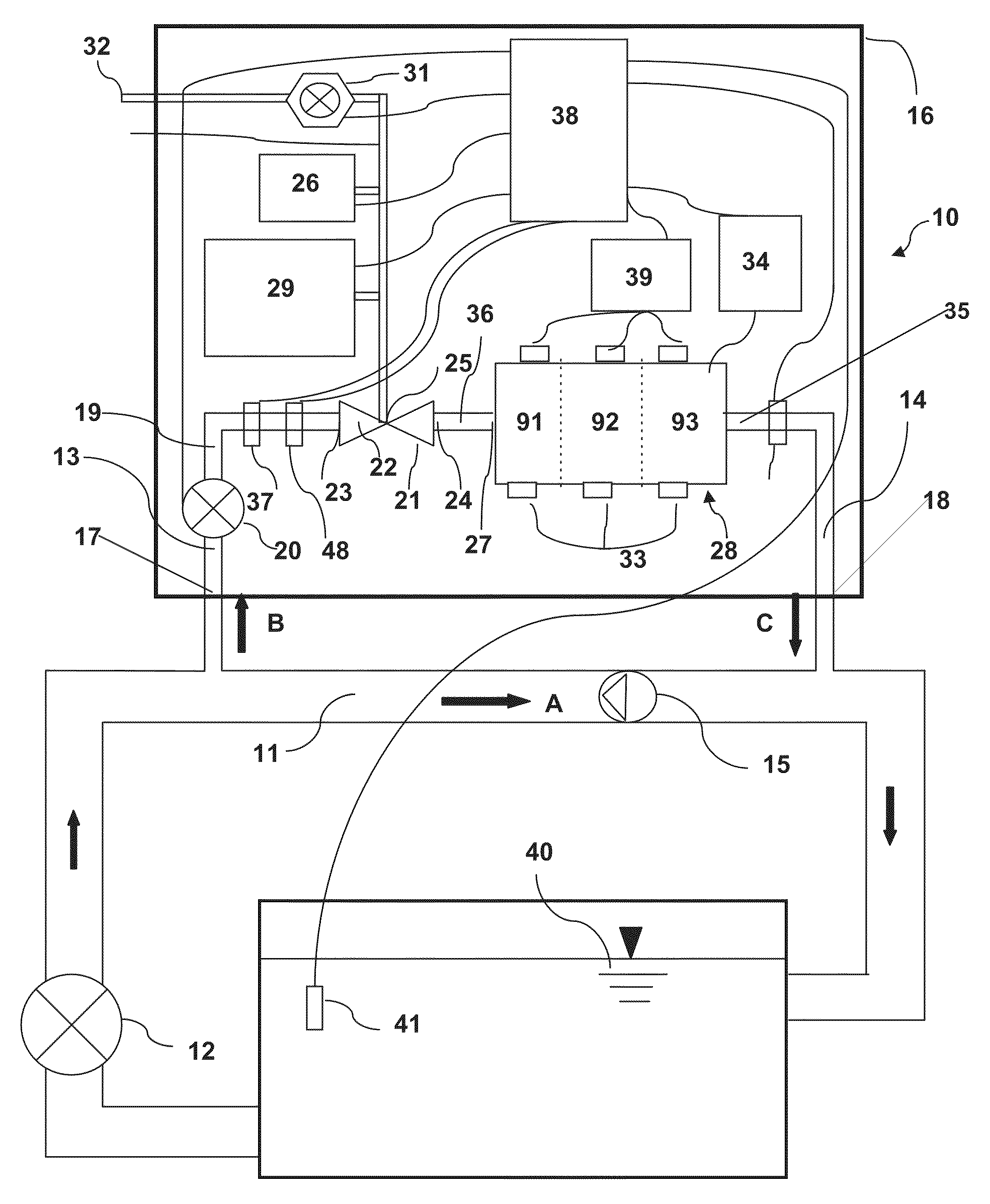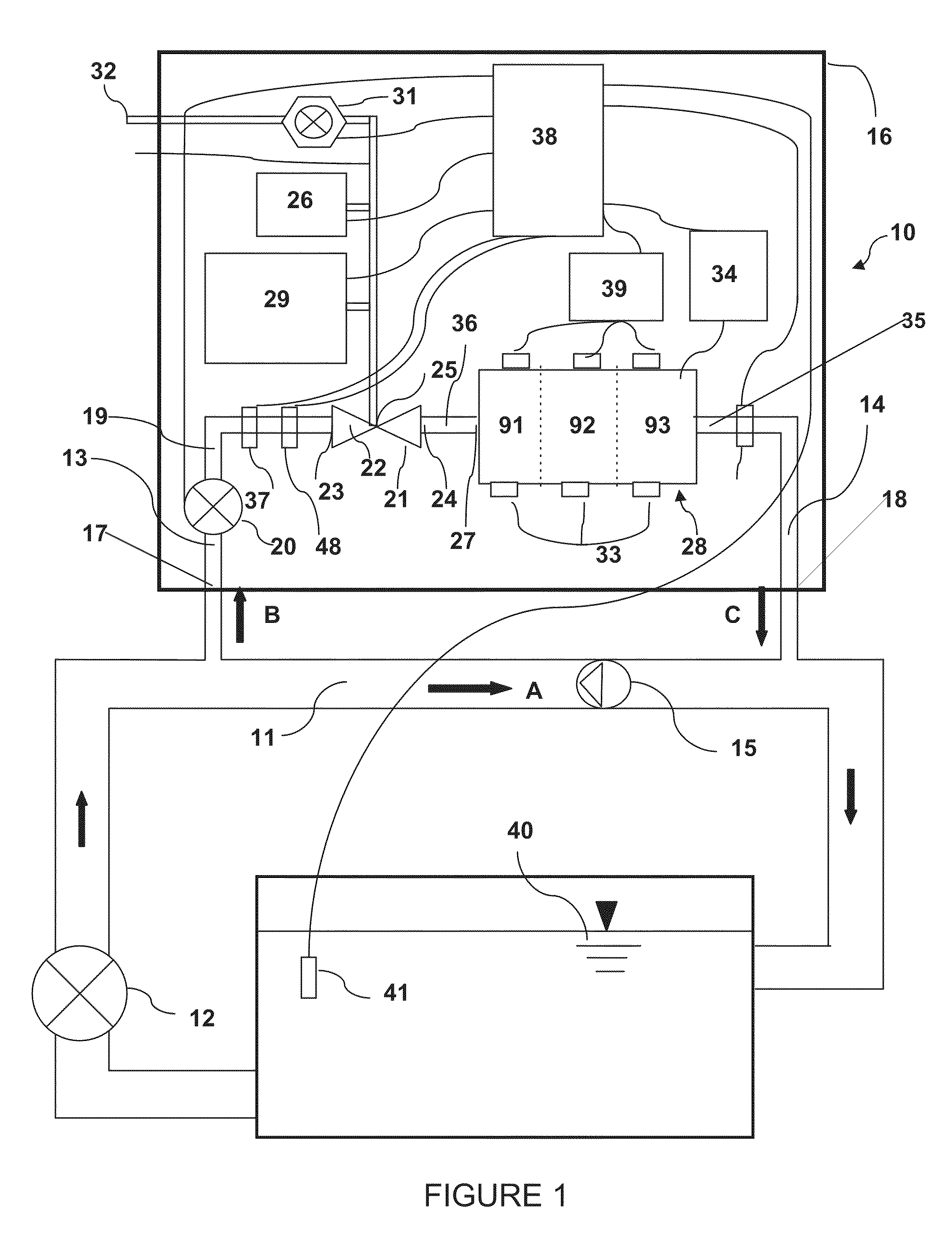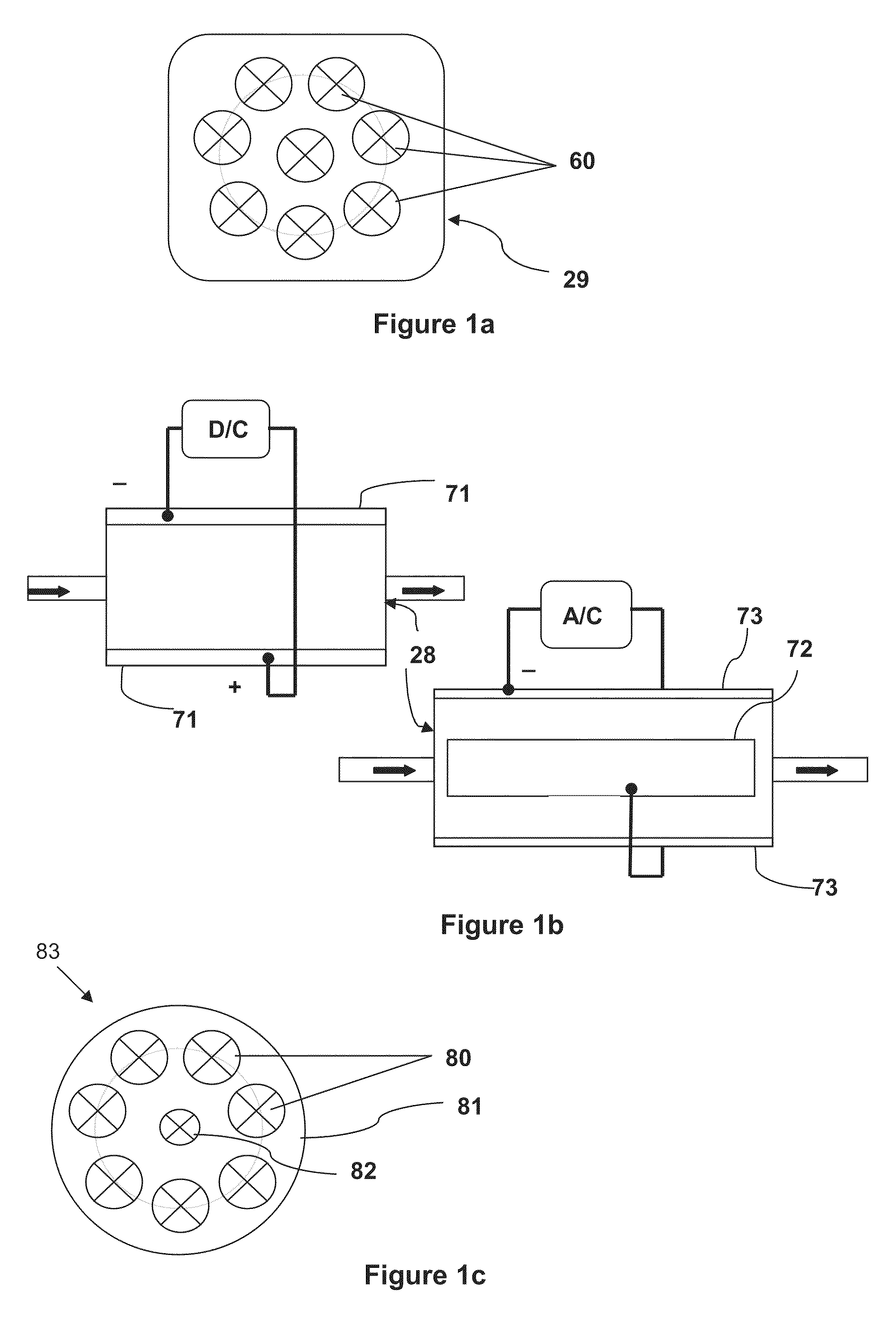Aqueous treatment apparatus utilizing precursor materials and ultrasonics to generate customized oxidation-reduction-reactant chemistry environments in electrochemical cells and/or similar devices
a technology of oxidation reduction and chemistry environment, applied in the direction of non-contaminated water treatment, energy-based chemical/physical/physicochemical process, energy-based wastewater treatment, etc., can solve the problem of unfavorable algae reduction, unfavorable human health, prolonged period, etc., to reduce maintenance costs, prevent leaching or oxidation, and remove harden scale buildup
- Summary
- Abstract
- Description
- Claims
- Application Information
AI Technical Summary
Benefits of technology
Problems solved by technology
Method used
Image
Examples
Embodiment Construction
[0156]With reference to the figures, the preferred embodiment of the present invention will now be described as it may be applied to specific configurations of electrolytic / electrochemical cell(s) for water and / or wastewater treatment. Referring now to FIG. 1, a water treatment apparatus 10 is shown in accordance with the present invention, adapted for use in a water reservoir 40, such as a swimming pool, spa, irrigation water treatment, industrial water treatment, groundwater remediation treatment, solution mining application, river, pond, aquatic mammal tank, fountain, drinking water plant, or the like.
[0157]Advantageously, water is circulated through the reservoir 40 by a circulation system including a main conduit 11 and a primary pump 12. In the embodiment of the invention shown, a secondary circulation system, or side stream, including a secondary supply conduit 13 and a secondary return conduit 14, is provided for diverting at least a portion of a stream of water, initially t...
PUM
| Property | Measurement | Unit |
|---|---|---|
| thicknesses | aaaaa | aaaaa |
| frequencies | aaaaa | aaaaa |
| frequency | aaaaa | aaaaa |
Abstract
Description
Claims
Application Information
 Login to View More
Login to View More - R&D
- Intellectual Property
- Life Sciences
- Materials
- Tech Scout
- Unparalleled Data Quality
- Higher Quality Content
- 60% Fewer Hallucinations
Browse by: Latest US Patents, China's latest patents, Technical Efficacy Thesaurus, Application Domain, Technology Topic, Popular Technical Reports.
© 2025 PatSnap. All rights reserved.Legal|Privacy policy|Modern Slavery Act Transparency Statement|Sitemap|About US| Contact US: help@patsnap.com



